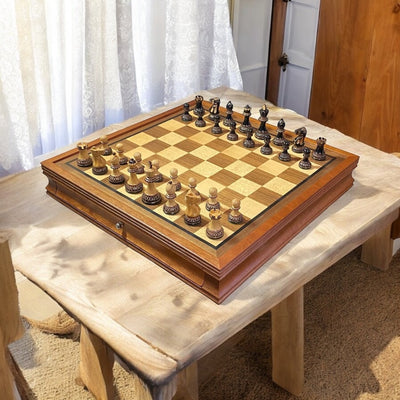What are the Pieces in Chess and What are They Worth?
Chess, the game of kings, has captivated minds for centuries with its intricate strategy and intellectual challenges. One of the fundamental aspects of chess strategy is understanding the value of each piece on the board. Many beginners and even experienced players often turn to the concept of "relative piece value" to assess the strength of their position and plan their moves. However, the notion of piece values is more complex than it might seem at first glance. In this article, we will dive into the topic of chess piece relative values, debunk some common myths, and explore the nuances that make chess a truly exceptional game.
The Basics of Chess Piece Values
At the heart of the discussion lies the concept of assigning numerical values to each chess piece. Traditionally, these values have been used to roughly gauge the strength of each piece and evaluate positions. However, it's essential to understand that these values are not set in stone and can vary depending on the specific position and stage of the game.
Here's a commonly used set of piece values:
- Pawn: 1 point
- Knight: 3 points
- Bishop: 3 points
- Rook: 5 points
- Queen: 9 points
These values are often taught to beginners to provide a general understanding of how different pieces compare in strength. But as the game progresses and positions change, these values can shift dramatically.
The Myth of Fixed Piece Values
One of the biggest misconceptions about chess piece values is that they remain constant throughout the game. In reality, the value of a piece is heavily influenced by the position on the board, the potential for future moves, and the overall strategic plan. A piece that might be considered weak in one situation could become a powerful force in another.
For example, a well-placed knight in the center of the board can control multiple squares and exert significant influence. On the other hand, a rook stuck in a corner with limited mobility might be less valuable than its point value suggests. Similarly, the queen's immense power can be a double-edged sword, as it can become a target for the opponent's attacks.
Evaluating Positions Holistically
As players progress in their chess journey, they quickly learn that evaluating positions requires a more nuanced approach than simply summing up piece values. Factors like pawn structure, king safety, piece activity, and overall coordination play crucial roles in determining the strengths and weaknesses of a position.
In certain situations, sacrificing a higher-value piece for a strategic advantage can be a brilliant move. The concept of "compensation" comes into play here – the player who sacrifices a piece gains other advantages, such as better development, open lines, or a more exposed opponent king.
Grandmasters' Insights
Chess grandmasters, the pinnacle of chess skill, emphasize the dynamic nature of piece values. Their deep understanding of the game allows them to navigate complex positions with creativity and intuition. They don't rigidly follow predefined piece values; instead, they adapt their strategies based on the specific needs of the position.
Garry Kasparov, one of the greatest chess players in history, once said, "Modern chess is too much concerned with things like pawn structure. Forget it – checkmate ends the game!" This statement highlights the ultimate goal of chess – checkmating the opponent's king – which often requires unconventional tactics and strategic sacrifices.
Conclusion
Chess piece relative values are a useful starting point for beginners, but they should not be treated as absolute truths. The dynamic and ever-changing nature of chess positions means that the strength of a piece is heavily influenced by its context. As players gain experience and develop their strategic thinking, they learn to prioritize factors like piece activity, king safety, and overall coordination.
So, the next time you sit down to play a game of chess, remember that the value of your pieces is not set in stone. Embrace the complexity of the game, be open to creative strategies, and strive to outwit your opponent through clever moves and well-thought-out plans. After all, chess is not just about the pieces; it's about the art of strategic warfare on a 64-square battlefield.






